The Schindler house is a historical landmark. Designed as a social experiment, in the summer of 1922 it became a home and studio. I propose that the house is a theater of domesticity.
Figure 1
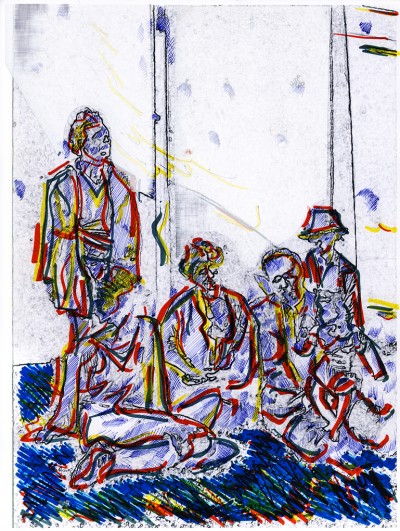
R.M. and Pauline Gibling Schindler, Sophie and Edmund Gibling, Dorothy Gibling and Mark Schindler at Kings Road, summer 1923.
Figure 2
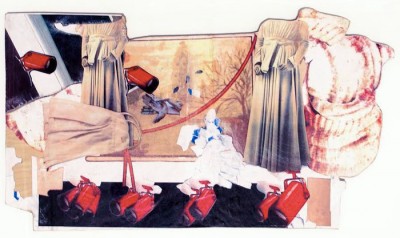
Jill Spector
Untitled, 2014
Color photocopy on wood
16.75 x 25 x 2 in
Courtesy of the artist and BolteLang, Zürich, Switzerland
Figure 3
The inhabitants simultaneously worked, created, and lived. They were flesh within the architecture.
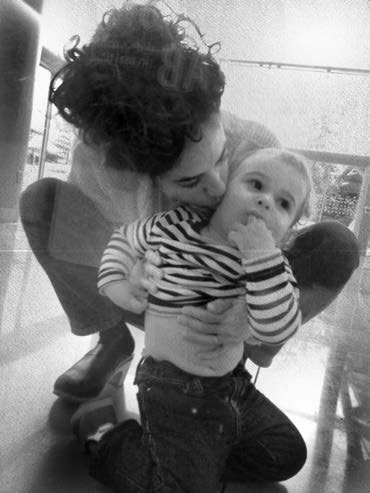
Mommy & Luke, 2014
Figure 4
Using the Chace apartments, there will be three pairs of sculptures, one for the M.D.C. Studio, a second for the C.B.C. Studio, and a third installed in the Nursery.
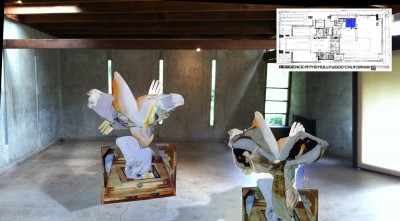
Jill Spector
Collage Proposal for Cutlets III in the M.D.C. Studio, 2012
Figure 5
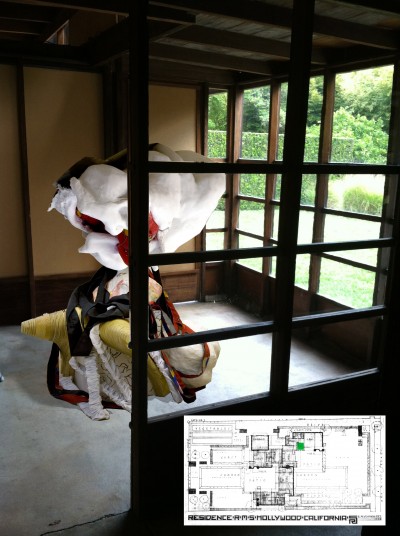
Jill Spector
Collage Proposal for Cutlets III in the C.B.C. Studio, 2012
Figure 6
These three collages are starting points—conglomerations of aesthetic possibilities for how imagined gestures, forms, and narratives would play out among inhabitants.
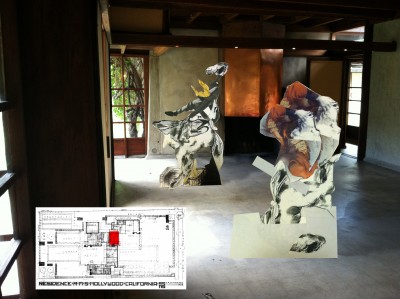
Jill Spector
Collage Proposal for Cutlets III in the Nursery, 2012
Figure 7
Like bodies performing a dance, variations in movement and differences in form will create a set of dynamics unique to the site of the Chace apartments. These sculptures will live in the space naturally, and if only for moments at a time, congenially, as the original inhabitants once had.
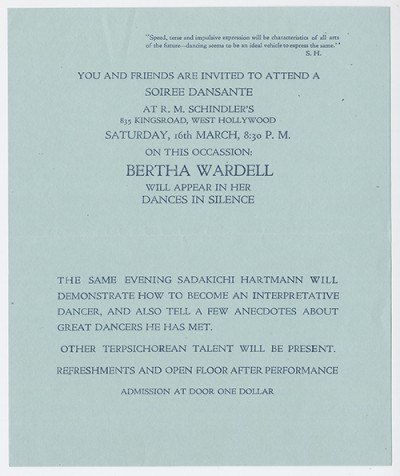
Announcement for Bertha Wardell performance of “Dances in Silence,” March 16, 1929, at Kings Road.
Figure 8
Cutlets III is a performance of sculpture, where movement is the material that builds new gestures. This partnering of sculptures continues recent experimentation with works that emerge from prescribed situations and happenstance.
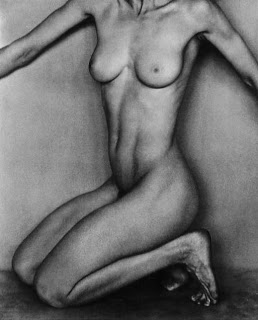
Photograph of Bertha Wardell by Edward Weston, 1927.
Figure 9
Is there a domestic situation for each pair of sculptures?1
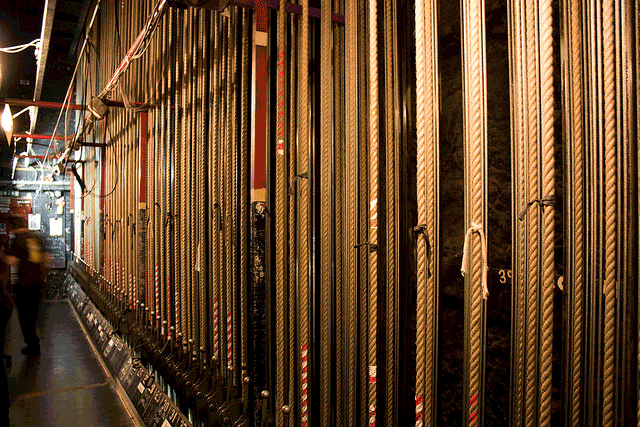
Figure 10
The pairs would be built from layers of plaster, wire, fabric, and photocopies on wood. Cast concrete erupts from the bases of certain sculptures, while others sit directly on the floor.
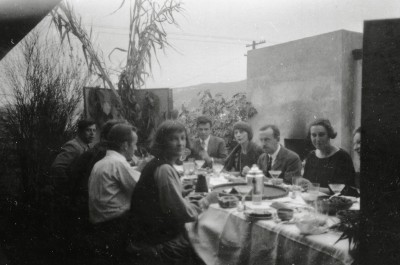
Thanksgiving at the Schindler House, 1924.
Figure 11
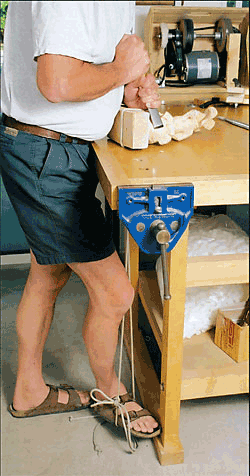
Rope clamp.2
Figure 12
Lowering onto this situation is a theater—a winch lowers and layers staging, frames, lighting, and ropes.
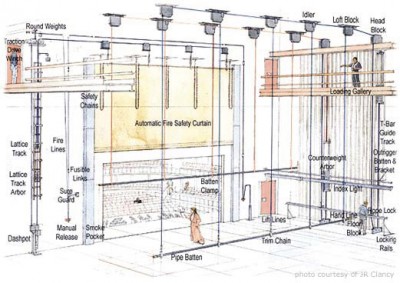
Theatrical rigging is most prevalent in proscenium theatres with stage houses designed specifically to handle the significant dead and live loads associated with fly systems. A simple counterweight system is based on the principal of establishing a balanced set of weights that allow a stagehand to raise and lower various loads with minimal effort.3
Figure 13
Moved and rearranged through the room, interrupting the space between the pairs in each setting or placed behind a sculpture, creating a backdrop that frames and highlights forms and gestures of an individual sculpture.

Diagram of a lineshaft hoist, which is a type of motorized rigging system. This is a winch with a series of cable drums connected to a gearbox with a common shaft.4
Figure 14
The theater evokes the natural transitions and tensions between the communal and private, not hiding, but marking, revealing, and acting out different behavioral scenarios between sculptures.
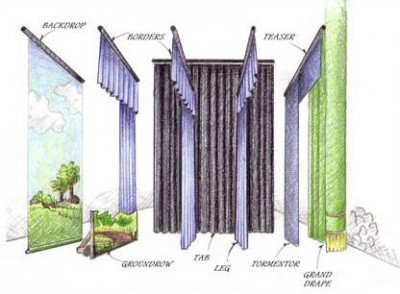
Exploded illustration showing different types of theater drapes and curtains. Theater drapes and stage curtains are large pieces of cloth that are designed to mask backstage areas of a theater from spectators.5
Figure 15
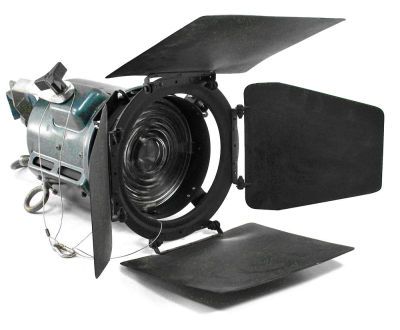
Vintage B&M (1K) 2K Fresnal Stage Movie Light
1 In proscenium theaters, drapes are typically suspended from battens that are controlled by a fly system. When a drape is flown, the task of adjusting its height for the best masking effect is simplified. In the case of a drape that must be moved during a performance, this enables the drape to be quickly raised above the proscenium arch—thus positioning it out of view of spectators—or lowered to any arbitrary height above the stage, as required. Source: Wikipedia
2 The Rope Clamp is a shop-made holding device that is a great way to hold an irregularly shaped carving. A rope is wrapped around your carving and threaded through a hole in your work bench. Source: Wood Carving Illustrated
3Source: North East Stage
4Source: Theatre Rigging Systems